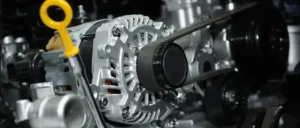Car electrical issues can often be traced back to blown fuses or faulty relays. Fortunately, replacing them is a simple task that doesn’t require special skills or tools. This guide will walk you through the entire process, ensuring you can safely and efficiently swap out these essential components.
Understanding Fuses and Relays
Before diving into the replacement process, let’s first understand what fuses and relays do in a car’s electrical system.
What is a Fuse?
A fuse is a safety device designed to protect electrical circuits by breaking the connection if the current exceeds a safe level. This prevents damage to wiring and electronic components.
Types of Car Fuses:
- Blade Fuses – These are the most common in modern vehicles. They come in different sizes and colors, each representing a specific amperage rating.
- Glass Tube Fuses – These are found in older vehicles and resemble a small glass cylinder with metal caps on both ends.
- Ceramic Fuses – Common in some European cars, these are more heat-resistant than glass fuses.
What is a Relay?
A relay is an electrically operated switch that allows a low-power circuit to control a high-power circuit. It acts as a bridge between your car’s electronic control unit and power-hungry components like the headlights, horn, and fuel pump.
Common Relay Applications in a Car:
- Headlights
- Cooling fans
- Fuel pump
- Horn
- Windshield wipers
Tools and Materials Needed
Gather the necessary tools before starting:
- Owner’s Manual – Essential for locating fuses and relays.
- Fuse Puller or Needle-Nose Pliers – To safely remove fuses.
- Replacement Fuses and Relays – Ensure they match the correct amperage and type.
- Multimeter (Optional, for Testing Circuits) – Useful for diagnosing electrical problems.
- Flashlight – Helps in low-light conditions.
- Safety Gloves – Protects your hands from dirt and sharp edges.
- Electrical Contact Cleaner – Helps remove corrosion from fuse and relay contacts.
Step 1: Locate the Fuse Box
Most vehicles have two fuse boxes:
- Inside the Cabin – Usually located under the dashboard near the driver’s side or in the glove compartment.
- Under the Hood – Typically found near the battery or firewall, this box contains fuses for major electrical components like the engine and headlights.
Refer to your owner’s manual to find the exact location.
Step 2: Identify the Blown Fuse
- Open the fuse box and locate the fuse diagram (usually printed on the fuse box cover or in the owner’s manual).
- Find the fuse that corresponds to the malfunctioning component (e.g., radio, headlights, or power windows).
- Remove the fuse using a fuse puller or needle-nose pliers.
- Inspect the fuse:
- Blown Fuse – If the metal strip inside is broken or burned, the fuse needs to be replaced.
- Intact Fuse – If the strip is continuous, the issue may be elsewhere.
Step 3: Replace the Fuse
- Match the Amperage Rating – Check the amperage rating printed on the fuse and select an identical replacement.
- Insert the New Fuse – Push the fuse securely into the slot.
- Close the Fuse Box – Ensure the cover is properly sealed to protect against moisture and dirt.
- Test the Component – Turn on the car and check if the component is working.
Warning: Never use a fuse with a higher amperage rating than recommended. Doing so can lead to electrical fires and further damage.
Step 4: Identifying a Faulty Relay
Relays control high-power components, and a faulty relay may cause intermittent or complete failure of a circuit.
Signs of a Bad Relay:
- The component does not function (e.g., headlights or fuel pump won’t turn on).
- You hear a clicking noise when turning on the component.
- The relay feels excessively hot when touched.
- Burnt smell or visible burn marks on the relay.
How to Test a Relay
- Swap with an Identical Relay – Locate another relay of the same type in the fuse box and swap them.
- Listen for a Click – When turning on the corresponding component, a functional relay should produce a faint clicking sound.
- Use a Multimeter – Set it to continuity mode and test the relay’s terminals.
Step 5: Replacing a Faulty Relay
- Locate the Relay Box – Usually near the fuse box under the hood or inside the cabin.
- Identify the Faulty Relay – Use the diagram on the fuse box cover to locate the correct relay.
- Remove the Relay – Gently pull it straight out; some relays may require slight wiggling.
- Install the New Relay – Insert it firmly into the correct slot.
- Test the Component – Turn on the ignition and check if the component is now functioning correctly.
Troubleshooting Common Issues
If the problem persists after replacing a fuse or relay, consider the following:
- Repeated Blown Fuses – This could indicate a short circuit in the wiring.
- Component Still Not Working – Check for loose connections or corroded terminals.
- Burnt Relay Contacts – Clean the relay slot with electrical contact cleaner before installing a new relay.
Additional Tips for Success
- Carry Spare Fuses – Keep a small box of fuses in your glove compartment for emergencies.
- Label Relays and Fuses – If your fuse box lacks a diagram, label each fuse and relay as you inspect them for future reference.
- Check for Corrosion – Use electrical contact cleaner to remove oxidation from fuse and relay slots.
- Consult a Mechanic for Persistent Issues – If the problem recurs despite replacing the fuse or relay, a deeper electrical issue may require professional diagnosis.
By following this guide, you can confidently replace your car’s fuses and relays, saving time and money while maintaining your vehicle’s electrical system in top condition. Regular checks and replacements will ensure your car runs smoothly and safely!




